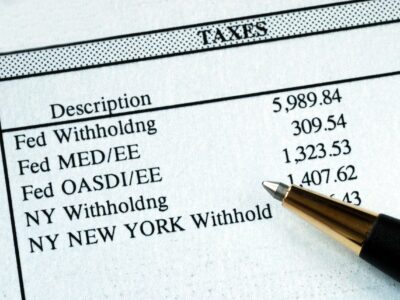Qualified property must also be placed in service before January 1, 2027 (or before January 1, 2028, for certain property with a long production period and for certain aircraft), and can be either new property or certain used property. Your property is qualified property if it is one of the following. You elect to take the section 179 deduction by completing Part I of Form 4562. Land and land improvements do not qualify as section 179 property.
Last year, in July, you bought and placed in service in your business a new item of 7-year property. This was the only item of property you placed in service last year. The property cost $39,000 and you elected a $24,000 section 179 deduction. You also made annual program reporting cycle dates an election under section 168(k)(7) not to deduct the special depreciation allowance for 7-year property placed in service last year. Because you did not place any property in service in the last 3 months of your tax year, you used the half-year convention.
- You begin to claim depreciation when your property is placed in service for either use in a trade or business or the production of income.
- The corporation then multiplies $400 by 4/12 to get the short tax year depreciation of $133.
- May Oak bought and placed in service an item of section 179 property costing $11,000.
The allowable depreciation for the tax year is the sum of the depreciation figured for each recovery year. For a short tax year beginning on the first day of a month or ending on the last day of a month, the tax year consists of the number of months in the tax year. If the short tax year includes part of a month, you generally include the full month in the number of months in the tax year. You determine the midpoint of the tax year by dividing the number of months in the tax year by 2. For the half-year convention, you treat property as placed in service or disposed of on either the first day or the midpoint of a month.
Depreciable or Not Depreciable
Larry’s business use of the property (all of which is qualified business use) is 80% in 2020, 60% in 2021, and 40% in 2022. Larry must add an inclusion amount to gross income for 2022, the first tax year Larry’s qualified business-use percentage is 50% or less. The item of listed property has a 5-year recovery period under both GDS and ADS. 2022 is the third tax year of the lease, so the applicable percentage from Table A-19 is −19.8%.
- See how the declining balance method is used in our financial modeling course.
- This property generally has a recovery period of 7 years for GDS or 12 years for ADS.
- The business part of the cost of the property is $8,800 (80% (0.80) × $11,000).
If you trade property, your unadjusted basis in the property received is the cash paid plus the adjusted basis of the property traded minus these adjustments. Enter the appropriate recovery period on Form 4562 under column (d) in Section B of Part III, unless already shown (for 25-year property, residential rental property, and nonresidential real property). The recovery period of property is the number of years over which you recover its cost or other basis. It is determined based on the depreciation system (GDS or ADS) used.
What Is Depreciation and How Do You Calculate It?
If there is a gain, the amount subject to recapture as ordinary income is limited to the result of the following. If you dispose of GAA property in a qualifying disposition, you can choose to remove the property from the GAA. A qualifying disposition is one that does not involve all the property, or the last item of property, remaining in a GAA and that is described by any of the following.
Options of Methods
Property placed in service before 1987 must be depreciated under the methods discussed in Pub. On April 6, Sue Thorn bought a house to use as residential rental property. At that time, Sue began to advertise it for rent in the local newspaper. The house is considered placed in service in July when it was ready and available for rent.
Use of Contra Account
However, if you buy technical books, journals, or information services for use in your business that have a useful life of 1 year or less, you cannot depreciate them. If you use property for business or investment purposes and for personal purposes, you can deduct depreciation based only on the business or investment use. For example, you cannot deduct depreciation on a car used only for commuting, personal shopping trips, family vacations, driving children to and from school, or similar activities. MACRS allows you to track and record depreciation using either the straight-line method or the double declining balance method.
It is taken into account in the year of change and is reported on your business tax returns as “other expenses.” A positive section 481(a) adjustment results in an increase in taxable income. Make the election by completing the appropriate line on Form 3115. The GDS of MACRS uses the 150% and 200% declining balance methods for certain types of property. A depreciation rate (percentage) is determined by dividing the declining balance percentage by the recovery period for the property. To figure your MACRS depreciation deduction for the short tax year, you must first determine the depreciation for a full tax year.
For example, some minimum level of electricity will always be used by a business just to keep the lights on and necessary machines running. Beyond that point, measures can be taken to reduce unnecessary spending on electricity. It is determined by estimating the number of units that can be produced before the property is worn out. The established amount for optional use in determining a tax deduction for automobiles instead of deducting depreciation and actual operating expenses. Ready and available for a specific use whether in a trade or business, the production of income, a tax-exempt activity, or a personal activity. Usually, a percentage showing how much an item of property, such as an automobile, is used for business and investment purposes.
For fees and charges you cannot include in the basis of property, see Real Property in Pub. However, computer software is not a section 197 intangible and can be depreciated, even if acquired in connection with the acquisition of a business, if it meets all of the following tests. A partnership acquiring property from a terminating partnership must determine whether it is related to the terminating partnership immediately before the event causing the termination. You must determine whether you are related to another person at the time you acquire the property. You generally cannot use MACRS for real property (section 1250 property) in any of the following situations.
You have no remaining cost to figure a regular MACRS depreciation deduction for your property for 2022 and later years. In January 2020, Paul Lamb, a calendar year taxpayer, bought and placed in service section 179 property costing $10,000. Paul elected a $5,000 section 179 deduction for the property and also elected not to claim a special depreciation allowance. In 2022, Paul used the property 40% for business and 60% for personal use. In 2022, Beech Partnership placed in service section 179 property with a total cost of $2,750,000. The partnership must reduce its dollar limit by $50,000 ($2,750,000 − $2,700,000).




